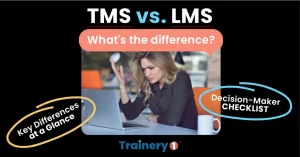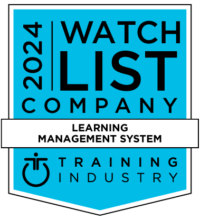Social media has increasingly coalesced communication around topics that, in the workplace, fall into the realm of HR. The “organizer” isn’t a person, but a symbol – the hashtag, the ubiquitous #.
Consider #LoveWins from 2015 commemorating the U.S. Supreme Court decision regarding same-sex marriage, #JeSuisCharlie which followed the workplace shooting at Charlie Hebdo in France, and #MeToo, which has given impetus to a number of discussions and legislation around sexual harassment, non-disclosure agreements and pay equity. The #Hashtag empowers the voices of individuals to be heard, fostering communication that leads to change inside and outside of the workplace.
The power of #conversation—and the pursuant policies and compliance requirements—lands squarely onto the shoulders of executive management and human resource professionals within the workplace.
Sexual Harassment
Alyssa Milano’s tweet in October of 2017, “If you’ve been sexually harassed or assaulted write ‘me too’ as a reply to this tweet” had 24,000 retweets, 53,000 “likes,” and 66,000 replies or comments as of the writing of this article. Alyssa Milano now has almost 3.5 million followers.
As one of the top HR compliance issues for 2018 in the U.S., there have been numerous regulations, laws, and court decisions that make it clear that employers in ALL states should provide anti-harassment training to their employees. However, the Departments of Labor of a number of states (Maine, Connecticut, California, Delaware, Louisiana, Maryland, New York, Oregon, and Vermont) have passed statutes with new policy and training requirements, some as early as the 1990s. In New York State, all employers are now required to provide sexual harassment prevention training to all employees by October 9, 2019 and to provide it on an annual basis. Not only that, but the training has to be interactive, which means that learners are required to “participate” at some level other than just listening, such as answering questions or taking a quiz.
Non-Disclosure Agreements
As a result of the #MeToo movement, Non-Disclosure Agreements, or NDAs, have come under scrutiny. Many American workers have signed NDAs as a condition of their employment. Also known as Confidentiality Agreements, these NDAs serve a purpose as they protect the organization from employees discussing their trade secrets and proprietary, confidential information with competitors. However, they can also serve as a barrier to employees being able to disclose the details or events that are part of a harassment settlement. As the #MeToo Movement has evolved, and the public began to see how NDAs were involved in hiding, and thus perpetuating, sexual and other types of harassment on the job, twelve states have instituted new rules inspired by #MeToo for public and private workplaces: Arizona, California, Delaware, Illinois, Louisiana, Maryland, Nebraska, New York, Oregon, Tennessee, Washington State and Vermont.
New York, in particular, has assumed a leadership position in creating and updating its laws to deal with sexual harassment. In addition to the mandated training, New York State now prohibits use of NDAs as part of sexual harassment claims unless the alleged victim wants one and, even then, the alleged victim has 21 days to consider the NDA and another 7 days after it has been signed to have it revoked. Other states have passed anti-harassment legislation following the start of the #MeToo movement, and many other states are expected to follow New York’s lead.
Pay Equity
Riding the wave, another hashtag exploded onto the scene, #TimesUp. The #TimesUp movement became a center point around which pay equity for women and for people of color began to be discussed, first in Hollywood, and later throughout the country. Pay equity laws essentially prohibit employers from paying employees of different genders different rates for the same job or work. Legislative activity around this issue is increasing, and protections in several states, including New York, already exceed federal regulations. As a result, Fair Pay Class action lawsuits are on the increase but, in addition to hurting a company’s bottom line, these lawsuits can damage customer relations and employee retention.
Steps Toward Compliance
What should your organization be doing to make sure your Human Resource functions are in compliance with state and federal laws?
- Have an effective training program. It’s always better to be proactive rather than reactive when it comes to harassment claims. Know your state’s laws and requirements on the issue. Have discussions with all levels of staff, including managers and supervisors, about what an inclusive work environment looks like. A good starting question: What is a respectful workplace?
- Create an organizational culture where it is safe for those who witness harassment on the job to speak up. See something…say something. Encourage those who feel they have been treated disrespectfully or harassed to speak up and make it safe for them to do so. Be sure to train supervisors and HR managers not to brush off these reports as trivial, but to accept the complaints in a professional manner.
- Make sure you have a clear anti-harassment policy as part of your employee handbook. This policy should include a reporting procedure, such as starting with the supervisor and moving up the ranks if necessary; examples of prohibited conduct; a complaint form; and a statement that retaliation is unlawful. This list is not exclusive. You can also go one step further by distributing the anti-harassment policy separately to each employee and requiring a signature for a copy kept in the employee file.
- Create a standard procedure for conducting investigations into harassment claims, emphasizing that impartial investigators only record verified factual information (no speculation or conclusions) such as answering the questions of who, what, when, where and how. You can also record any witnesses to the harassment and other factual comments.
- Don’t give special treatment for certain categories of employees (executives, managers, supervisors, administrative, etc.). Just because an employee is a high performer, for example, doesn’t mean that he or she should be allowed to engage in harassing behavior.
- Find an external consultancy to help you or conduct an internal pay equity study to make sure that you are paying people fairly. Ensure that everyone who is doing the same work and has the same level of seniority is being paid the same amount regardless of gender.
Resources
- If you are in New York State, https://www.ny.gov/combating-sexual-harassment-workplace/employers will be helpful in answering employers’ questions about policies, complaint forms and training requirements, including a webinar.
- Human Resource firms can also be of help in creating or updating employee handbooks or policy manuals. They can perform HR audits to help you determine where your organization may be at risk. JER HR Group is one such organization in New York City.
- Looking for anti-harassment training? You have several options. The most basic step is to provide a video for each employee to watch that will cover your requirement. If you want to—and we suggest you do—go further toward a “respectful culture,” consider live training where role-playing, table discussions and open dialogue can take place. Finally, if you have identified employees who are finding it difficult to be respectful in the workplace, one-on-one coaching can be very effective.







